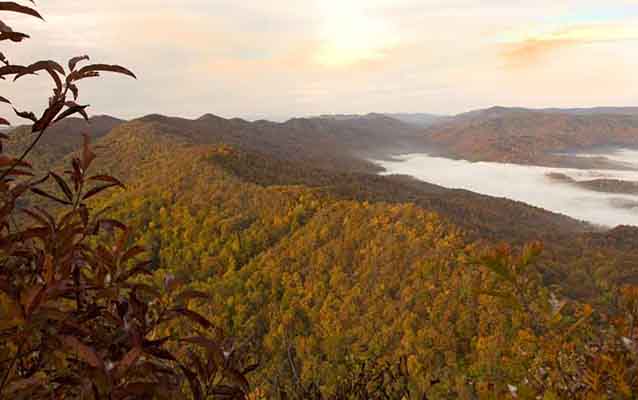Last updated: March 8, 2019
Lesson Plan
A Trip Down the Cumberland Trail

- Grade Level:
- High School: Ninth Grade through Twelfth Grade
- Subject:
- Social Studies
- Lesson Duration:
- 90 Minutes
- State Standards:
- NATIONAL/STATE STANDARDS:
ACT Quality Core Standards:
Exploring the skills and strategies underlying US History: 1D)
Rebuilding a nation: 1A) - Thinking Skills:
- Remembering: Recalling or recognizing information ideas, and principles. Understanding: Understand the main idea of material heard, viewed, or read. Interpret or summarize the ideas in own words. Applying: Apply an abstract idea in a concrete situation to solve a problem or relate it to a prior experience. Analyzing: Break down a concept or idea into parts and show the relationships among the parts.
Essential Question
What is the Cumberland Trail and why is it important?
Objective
Students will learn about the purpose of the Cumberland Trail.
Students will experience scenic views of the Cumberland Trail and will see the natural world associated with the Cumberland Plateau, high ridges, deep gorges, and experience the wilderness of two national parks: Cumberland Gap National Historical Park and Chickamauga Chattanooga National Military Park.
Students will compare and contrast between historic travel and modern travel as well as difficulties one might encounter.
Background
This lesson will focus on the Cumberland Trail which runs along the steep ridges of the southern mountains from Cumberland Gap National Historical Park in the north to Chickamauga Chattanooga National Millitary Park in the south. The Cumberland Trail is also part of the Great Eastern Trail which encompasses numerous long range trails in the eastern United States. Modern day explorers come from far and wide to experience the journey and to reflect on stories of past travelers.
The Cumberland Trail runs approximately 230 miles from Cumberland Gap National Historical Park in the north to Chickamauga Chattanooga National Military Park in the south. The trail runs along the Cumberland Mountain and the Cumberland Plateau and features numerous plants, animals, geologic formations, and scenery. The trail runs through several communities and provides a wide range of cultural experiences. The trail is part of the Tennessee State park system and is managed by multiple agencies including: Tennessee State Parks, the National Park Service, and the United States Forest Service.
Preparation
For this lesson you will need access to the park website (www.nps.gov/cuga), and maps of area.
Procedure
I. Students should view the video The Cumberland Trail and take notes of the different land features they see.
II. In small groups, students will be asked to brain-storm and come up with ideas of hardships that they might encounter while hiking the Cumberland Trail
III. Each group will create a list of items they would need to hike the Cumberland Trail and include an event planner.
a. Students need to plan how long it will take them to hike the trail, how much food they will need, how much water, sleeping gear, etc.
b. Each group will estimate the weight that they will each need to carry within their group to make the trip.
IV. Using online resources, students will generate a list of items that a group of pioneers might carry with them during westward expansion.
V. Each group will compare their modern list to the pioneer list and explain the differences.
VI. Each individual student will write a short paper comparing and contrasting the differences in westward expansionand/or exploring and modern day hiking.
Contact Information
Email us about this lesson plan
